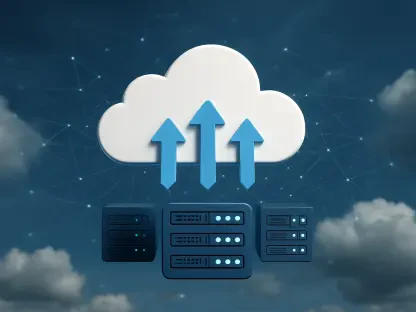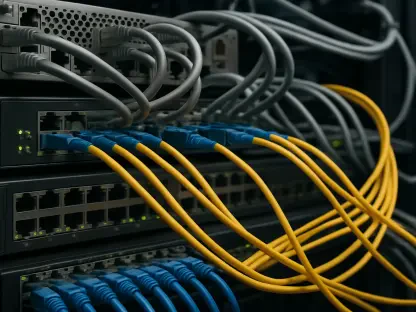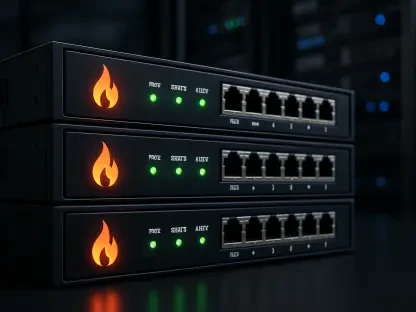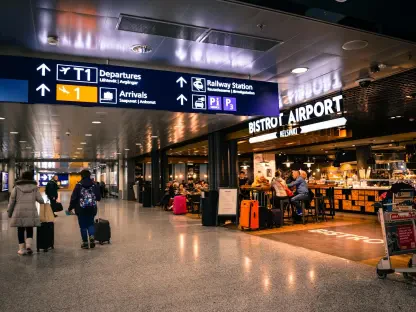I’m thrilled to sit down with Matilda Bailey, a renowned networking specialist with a deep focus on cutting-edge technologies in cellular, wireless, and next-gen solutions. With her extensive expertise in the cybersecurity landscape, Matilda offers a unique perspective on the evolving world of cyber risk management. Today, we’ll dive into the journey of Safe, a leading cyber risk management firm, exploring their innovative AI-driven approaches, recent funding milestones, and their vision for the future of cybersecurity. We’ll touch on how they stand out in a crowded market, the critical role of third-party risk assessment, and the exciting potential of Cyber Artificial General Intelligence.
Can you walk us through the story behind Safe’s founding in 2012 and what drove its creation?
Absolutely, Sebastian. Safe was born out of a recognition back in 2012 that cybersecurity was becoming a massive challenge for organizations, far beyond just installing antivirus software. The founders saw a gap in strategic risk management—most tools at the time were reactive, focusing on detecting breaches after they happened. They wanted to build something proactive, a platform that could anticipate and quantify risks before they turned into disasters. The mission was to empower businesses to make informed decisions about their security posture, and that vision still drives Safe today.
How does having roots in Bombay, India, and a headquarters in Silicon Valley shape Safe’s approach or operations?
It’s a powerful combination. Being incubated in Bombay gave Safe access to incredible technical talent and a perspective on global markets from a diverse, dynamic environment. It shaped an ethos of innovation with limited resources—doing more with less. Meanwhile, being headquartered in Silicon Valley puts Safe at the heart of tech innovation and venture capital, surrounded by the biggest players in cybersecurity. It’s allowed the company to stay ahead of trends, build strategic partnerships, and attract top-tier investors. This dual identity really fuels a unique, global outlook on solving cyber risks.
What do you think sets Safe apart from the crowded field of cybersecurity companies out there?
What makes Safe stand out is that it’s not just another detection tool in a sea of similar products. It positions itself as a strategic intelligence layer that sits above the entire cybersecurity stack. Instead of just alerting you to a breach, Safe helps organizations understand their risks across enterprise resources, third-party dependencies, and even AI tools. It’s about quantifying those risks and providing actionable insights to prioritize and mitigate them. That holistic, proactive approach is a game-changer for businesses trying to navigate an increasingly complex threat landscape.
Let’s talk about the recent $70 million Series C funding round. How does this milestone fit into Safe’s broader growth story?
This funding round is a huge step forward, bringing Safe’s total raised to over $170 million. It’s a testament to the trust investors have in Safe’s vision and its ability to execute. This capital injection comes at a critical time when cybersecurity is a top priority for CEOs and boardrooms. It’s not just about the money—it’s about scaling up to meet the growing demand for sophisticated risk management solutions. This round positions Safe to expand its footprint and double down on innovation, which is crucial in such a fast-moving industry.
Can you share some insight into why investors like Avataar Ventures were a good match for this funding round?
Avataar Ventures, along with the other investors, really aligned with Safe’s mission to transform cybersecurity into a strategic priority rather than a reactive measure. They bring more than just capital—they offer deep expertise in scaling tech companies and a strong belief in AI-driven solutions. Their founding partner even highlighted how Safe stands out as an intelligence layer, not just another tool. That shared vision and their network in the tech ecosystem make them ideal partners to help Safe navigate this next phase of growth.
How does Safe plan to leverage this new funding to strengthen its presence in the cyber risk management market?
The funding will primarily fuel two areas: market expansion and innovation. Safe aims to accelerate its presence globally, reaching more organizations that need robust risk management solutions. At the same time, a big chunk of the investment will go into advancing their AI-native reasoning models. This means enhancing their platform’s ability to predict and manage risks autonomously. It’s about staying ahead of cybercriminals by building smarter, faster tools that can adapt to new threats in real time.
Safe’s platform heavily relies on AI. Can you explain how it helps organizations tackle cyber risks in a practical way?
Sure, AI is at the core of Safe’s platform. It’s used to quantify risks across an organization’s entire ecosystem—think internal resources, third-party vendors, and even supply chains. The AI analyzes vast amounts of data to identify vulnerabilities and predict potential threats before they materialize. It’s not just about flagging issues; it’s about giving organizations a clear picture of their risk exposure with actionable recommendations. This helps leaders allocate budgets effectively and meet regulatory requirements without guesswork.
What unique advantages do Safe’s 25+ specialized AI agents bring to the table for autonomous risk management?
These AI agents are like a team of expert analysts working 24/7. Each one is tailored to handle specific aspects of cyber risk management, from threat detection to third-party assessments. They operate autonomously, which means they don’t just wait for human input—they actively identify, prioritize, and even suggest mitigation strategies for risks. This level of automation reduces human error and speeds up response times significantly, which is critical when dealing with cyber threats that can evolve in minutes.
With over 100 API integrations for real-time data, how do these connections enhance the user experience?
The API integrations are a huge boost for usability and accuracy. They allow Safe’s platform to pull in real-time data from a wide range of sources—think security tools, vendor systems, and threat intelligence feeds. This means users get a comprehensive, up-to-the-minute view of their risk landscape, rather than relying on outdated reports. It streamlines decision-making because the data is always fresh, and it helps organizations respond faster to emerging threats, ultimately improving their security posture.
Why is focusing on third-party vendors and supply chain risks so important for organizations right now?
Third-party and supply chain risks are a massive blind spot for many organizations today. As businesses rely more on external partners, a single weak link can compromise an entire network. We’ve seen high-profile breaches where attackers exploited a vendor to gain access to a larger target. Assessing these risks is critical because they’re often outside an organization’s direct control, yet they can have catastrophic consequences. It’s about securing the extended ecosystem, not just your own walls.
How does Safe’s platform specifically help organizations address and mitigate these third-party risks?
Safe’s platform provides detailed assessments of third-party vendors and supply chains, identifying vulnerabilities and potential entry points for attackers. It prioritizes findings based on severity, so organizations know where to focus their efforts first. Beyond just pointing out problems, it offers actionable steps to mitigate those risks—whether that’s tightening vendor contracts, implementing stricter access controls, or conducting regular audits. It’s a structured approach that turns a complex problem into a manageable process.
Can you share a real-world example of how Safe has helped a client manage a supply chain or vendor-related risk?
Without diving into specifics for confidentiality, I can tell you about a mid-sized financial services client who was struggling with visibility into their vendor ecosystem. Safe’s platform mapped out their third-party dependencies and flagged a critical vulnerability in one of their key suppliers’ systems. The AI prioritized this as a high-risk issue and provided a mitigation plan. The client was able to work with the vendor to patch the issue before it was exploited. This not only prevented a potential breach but also strengthened their overall relationship with that supplier through better security practices.
Safe has talked about aiming for Cyber Artificial General Intelligence, or CyberAGI. Can you explain what this vision means for the future of cybersecurity?
CyberAGI is an ambitious goal to create a system that can think and act like a human cybersecurity expert, but at a scale and speed no human could match. It would predict, detect, and respond to threats autonomously across every facet of security—from asset management to recovery and compliance. For the future of cybersecurity, this means moving from a reactive stance to a truly predictive one, where systems don’t just respond to attacks but anticipate them. It could revolutionize how we protect digital ecosystems by minimizing human oversight while maximizing effectiveness.
Looking ahead, what is your forecast for the evolution of cyber risk management over the next decade?
I believe we’re heading toward a world where cyber risk management becomes deeply integrated into every aspect of business operations, not just IT. Over the next decade, I expect AI and automation to play an even bigger role, with systems like CyberAGI becoming more common. Threats will continue to grow in sophistication, especially with the rise of AI-driven attacks, so our defenses will need to be predictive and adaptive. I also foresee stricter regulations globally, pushing companies to prioritize risk management at the board level. It’s going to be a challenging but exciting time, and platforms like Safe will be at the forefront of navigating that complexity.









